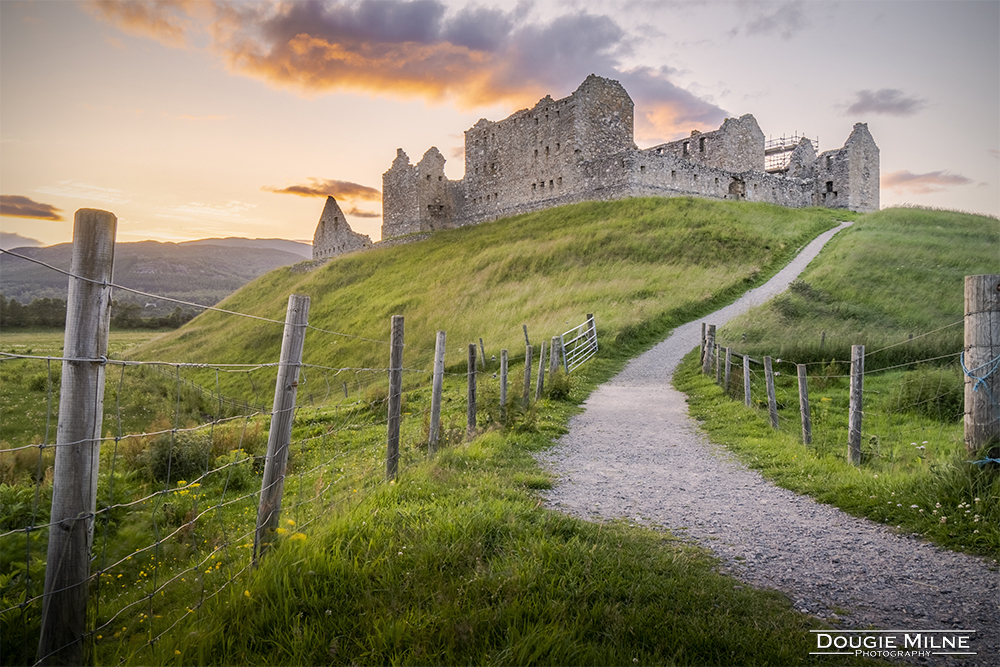
Click on picture for buying options
TweetRuthven Barracks, by the village of Kingussie in the Scottish Highlands, are the best preserved of the four barracks built by George II’s government between 1719 and 1721 following the 1715 Jacobite rising. Their purpose was to house an infantry of British Army soldiers - redcoats - to enforce the Disarming Act of 1716 and to bring the lawless Highlanders into line. They could garrison around 120 men and their officers. There were twelve rooms in total, each sleeping ten men, with two men in each bed.
They were built on the site of Ruthven Castle, which had been attacked and destroyed by the Jacobite troops of John Graham of Claverhouse - aka "Bonnie Dundee" - during the rising of 1689. Only the well of the castle still remains. Dominating the landscape at the head of the Spey Valley, the strategic advantages of the location are obvious.
By 1745, the British Government thought that the Jacobite threat had been suppressed, and troops were taken away from Scotland to fight in the ongoing war with France. When the barracks were besieged by 300 Jacobite troops in August 1745, there were only twelve redcoats of the 6th Regiment of Foot inside. The siege failed, and only one redcoat died by, according to Sergeant Terrence Molloy, "foolishly holding his head high over the parapet". Two Jacobites were killed and many more were injured.
A Jacobite force returned in February 1746, under John Gordon of Glenbuche, armed with two cannons. After a short siege, Molloy surrendered.
On 17th April 1746, the day after being soundly defeated at the Battle of Culloden, some 3000 Jacobites retreated to the barracks to regroup and await orders from Prince Charles Edward Stuart. When they arrived, on April 20th, they were not good. Bonnie Prince Charlie, disguised as a woman, had fled to Skye, leaving the message "Let every man seek his own safety in the best way he can".
One Jacobite Chevalier reported "The answer, under existing circumstances, was as inconsiderate in Charles as it was heart-breaking to the brave men, who had sacrificed themselves in his cause".
The departing Jacobites destroyed the barracks as they left so that they could not be used by the British. But the British, determined to stamp out the Jacobite threat once and for all, resorted to genocide. Over the next few years, anybody who was suspected of Jacobite sympathies was murdered in cold blood by British troops. Many Jacobites fled to the colonies. Prince Charles himself never returned to Scotland, and died a guilt-ridden alcoholic in Rome in January 1788.
This picture was taken on 15 July 2021.